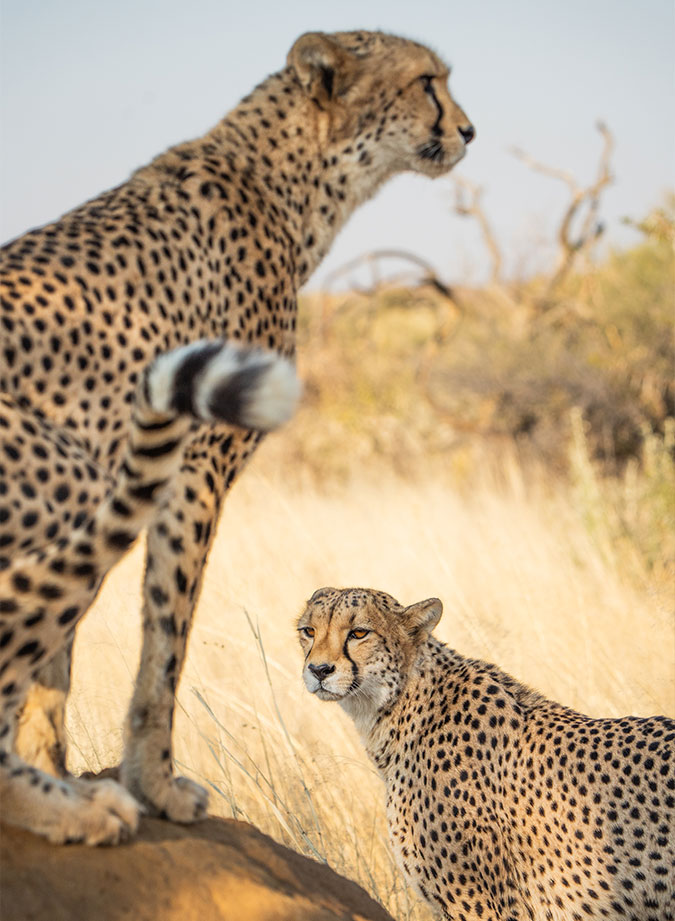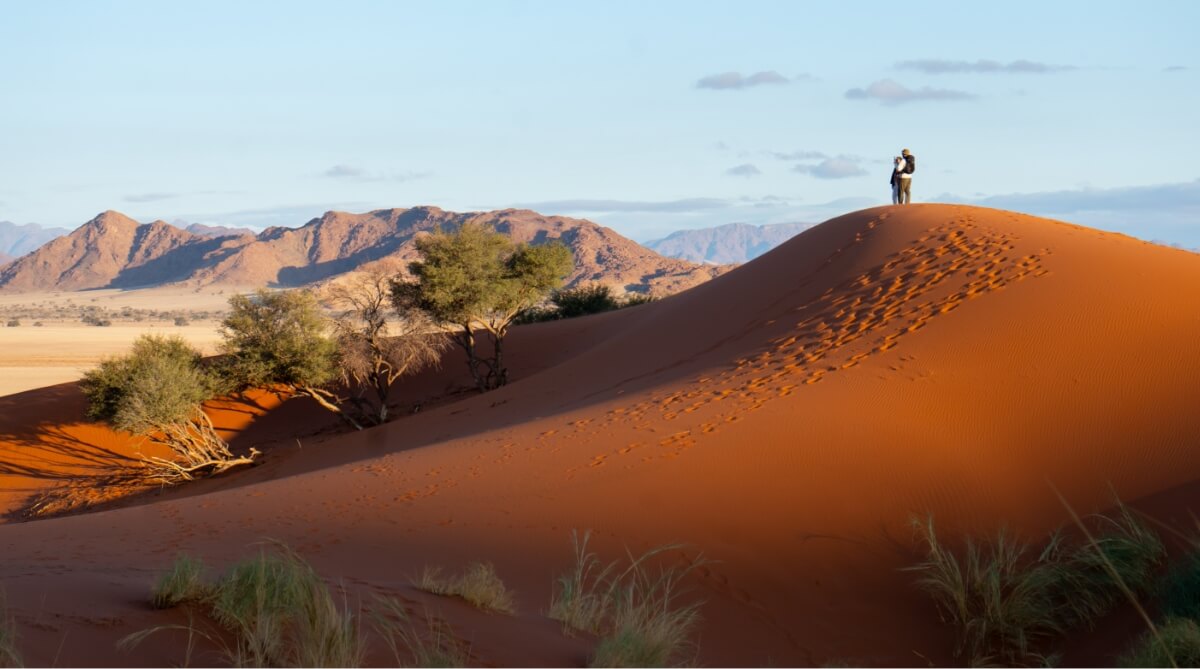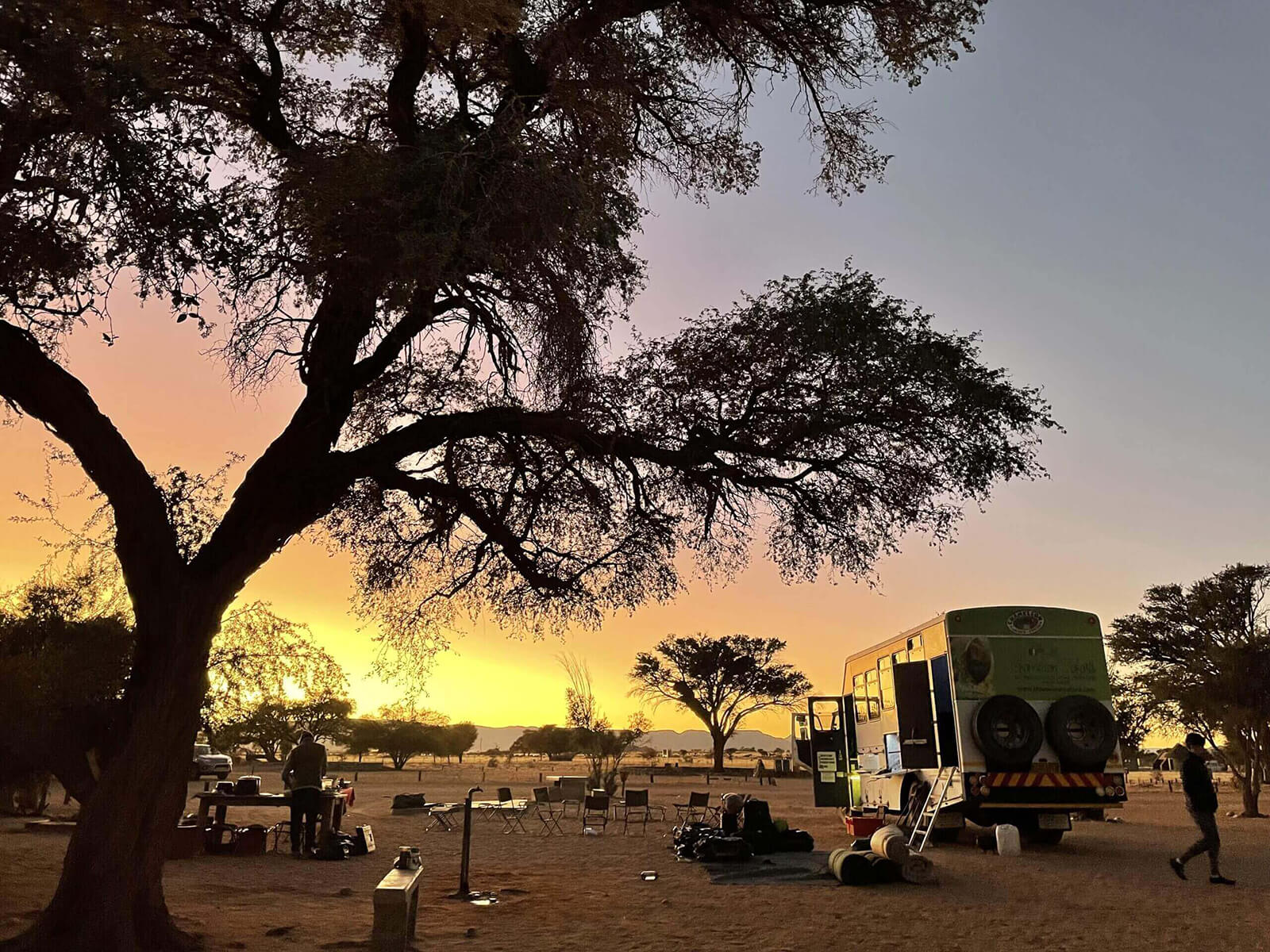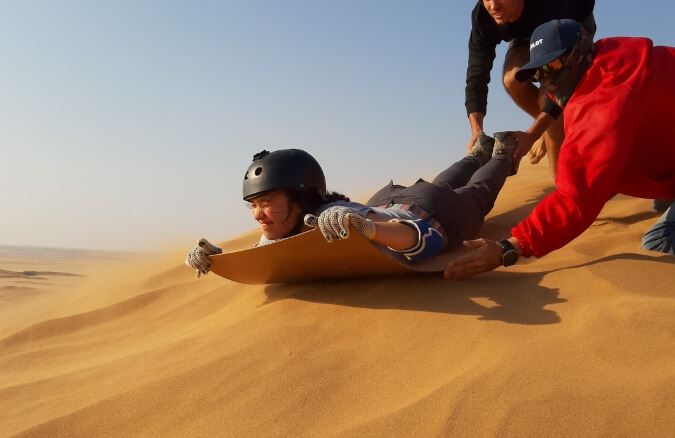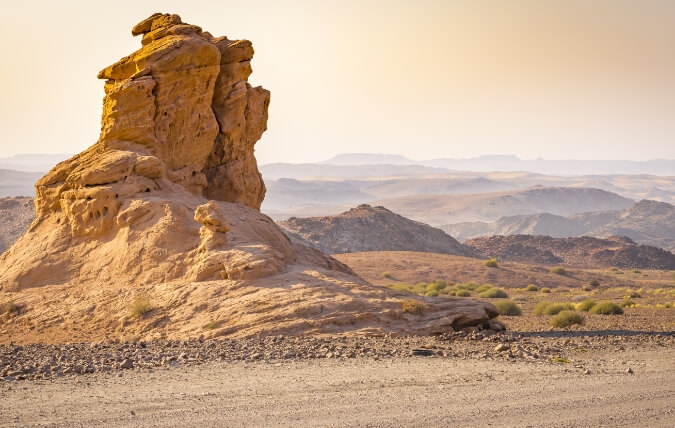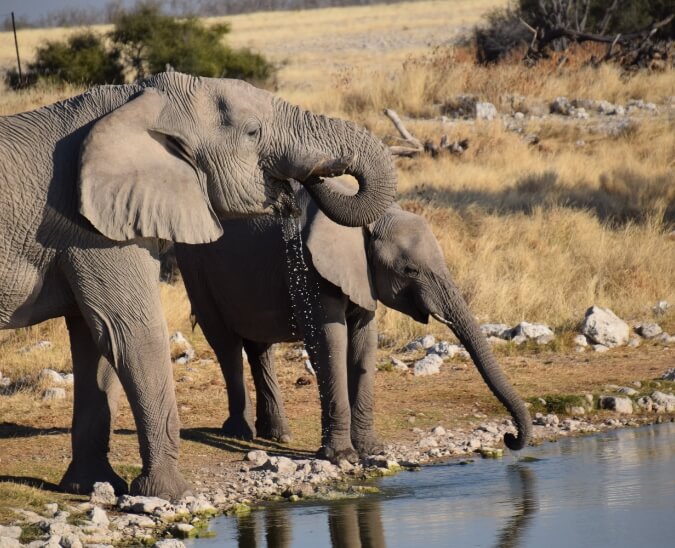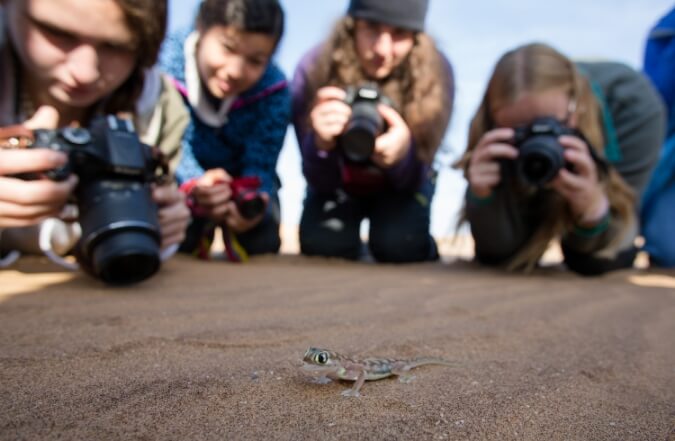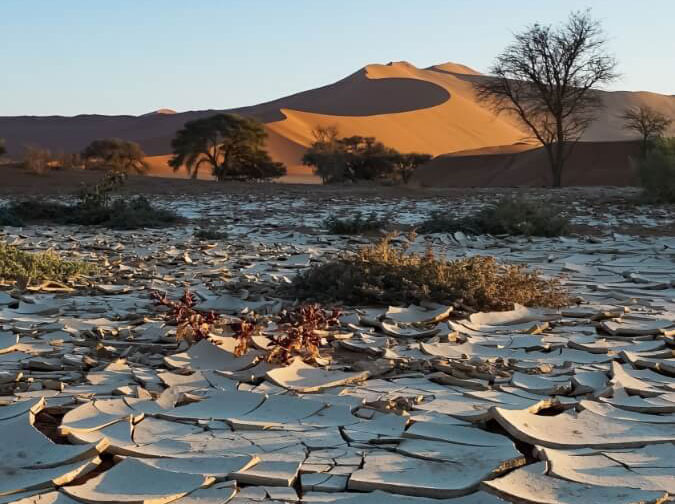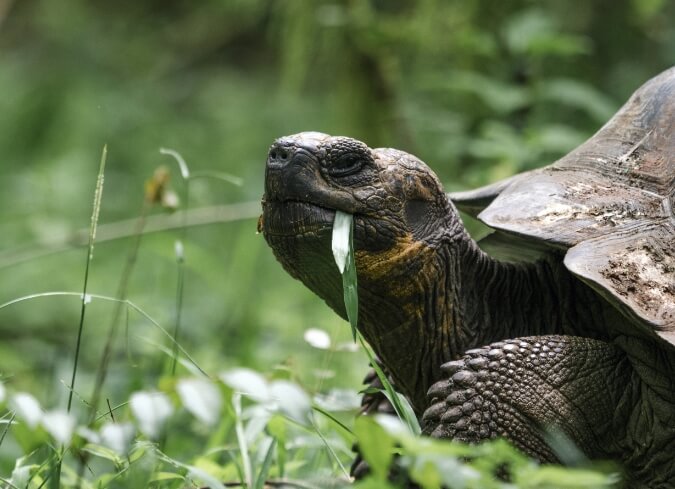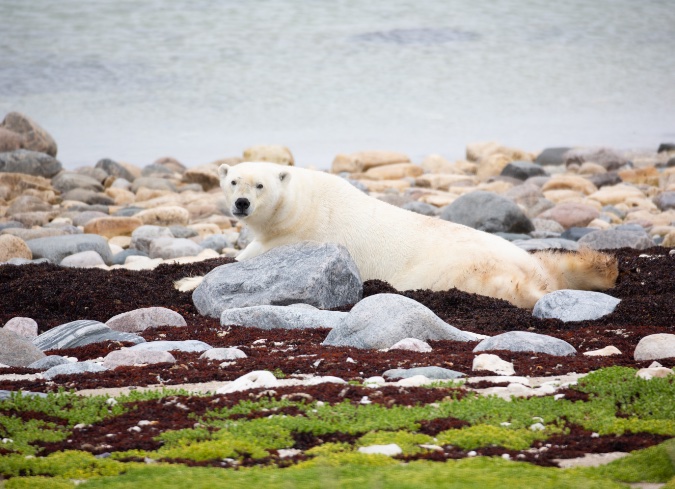NamibiaDesert Safari & Big Cat Conservation
This summer, go into the field and experience conservation in action in Namibia with National Geographic Explorers, leading ecologists, storytellers, and other like-minded high school students. Choose either the Photography or Wildlife Conservation On Assignment theme, and delve into your focus area. Along your journey, photograph iconic African wildlife like elephants, hyenas, giraffes, and oryx on safari; go sea kayaking in Walvis Bay; and climb the dunes of the Namib Desert.
Details
Highlights
- Photograph Sossusvlei’s unique red sand landscapes
- Learn from experts how technology is used to monitor wildlife
- Surf towering desert dunes on a sandboarding excursion
- Go on safari in world-renowned Etosha National Park
Featured Expert
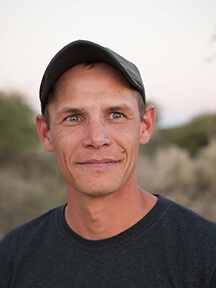 |
Florian Weise, Wildlife Biologist |
Big cat researcher and conservationist Dr. Florian Weise has spent nearly two decades on the African continent studying and protecting endangered species. His work helps to reduce conflicts between southern Africa’s large cats—cheetah, lion, and leopard—and local farmers. Florian combines traditional and modern methods in his conservation research, always looking for innovative ways to improve human-wildlife coexistence. For example, he helped develop an app that warns people about approaching lions, giving them an opportunity to avoid dangerous encounters or attacks on livestock. He is also a National Geographic Explorer, combining his passion for fieldwork and the outdoors. Together with National Geographic, Florian deployed Critter Cams on lions in Botswana, a world first that yielded amazing footage from the cats’ perspective. After leading several projects throughout Namibia and in the Okavango Delta, he now manages a zoo in Germany. Florian will join the Namibia program at N/a’an ku sê.
Itinerary
This itinerary represents our best projection of the group’s schedule. However, we may implement changes designed to improve the quality of the program.
- Departure
- Travel Day
Meet your fellow high school student travelers and one or more of your program leaders in New York, and fly together to Windhoek, Namibia.
- N/a’an ku sê Wildlife Sanctuary
- 4 days
The program begins at N/a’an ku sê Wildlife Sanctuary, where National Geographic-supported researchers have developed innovative approaches to protecting predators while reducing predation on local livestock. Settle into your accommodations, get to know your group and On Assignment team through an in-depth orientation, then head into the field with local wildlife experts on game counts, collar-tracking exercises, or to set up camera traps at watering holes. Snap close-up shots of resident cheetahs exercising using a lure on a pulley system mimicking wild prey, and zoom out to photograph herds of zebras and springbok in the afternoon sun. Meet with a herpetologist for an introduction to the important role snakes play in the Namibian landscape. Discuss the effects of climate change on this desert ecosystem with field ecologists, and participate in a conservation careers workshop led by a National Geographic Explorer.
- Sossusvlei, Swakopmund, & the Namib Desert
- 5 days
Travel south to Sesriem Canyon and Sossusvlei—a salt and clay pan surrounded by towering dunes. Camp overnight in the national park and wake early to photograph the sun rising over the massive orange-red dunes. Pay a visit to the iconic Deadvlei, a stark landscape dotted with ancient, skeletal camel thorn trees. Continue to the seaside city of Swakopmund, and explore the nearby dunes with desert ecologists, learning about the species that have adapted to survive the harsh conditions. Then zoom down dune slopes on a sandboarding excursion. Visit Cape Cross to observe a vast breeding colony of some 100,000 Cape fur seals, and paddle alongside dolphins, flamingos, and pelicans on a guided sea-kayaking adventure in Walvis Bay.
- Damaraland
- 2 days
Journey into Damaraland, where the desert harbors unusually succulent plants fed by Atlantic mists. With local guides, hike to the White Lady rock etching, believed to date back at least 2,000 years. Pay a visit to Brandberg Mountain, a giant granite monolith and Namibia’s highest mountain peak; then descend into the neighboring valley and venture across the stark landscapes in search of endangered desert-adapted elephants.
- Etosha National Park
- 3 days
Namibia’s dry season spans April through October, when herds of plains game flock to the waterholes of Etosha National Park, and their predators—lions, leopards, and cheetahs—follow close behind. Enjoy three days on safari here, looking for big cats, giraffes, oryx, rare black-faced impalas, and endemic birds like the bare-cheeked babbler. Stop at watering holes for close-up views of bathing elephants, zebras drinking at the water’s edge, and hartebeests splashing in the shallows. Meet with park rangers and learn about their efforts to encourage conservation through tourism.
- Okonjima Nature Reserve
- 3 days
Explore the 55,000-acre Okonjima Nature Reserve, home to the AfriCat Foundation, a nonprofit organization dedicated to protecting Namibia’s carnivores and other wildlife in their natural habitat. Join expert trackers in search of elusive leopards, rhinos, hyena, or the endangered pangolin. Talk with AfriCat’s conservation team about predator-conservation outreach efforts, hear about their collaborations with local farmers, and learn about their work to mitigate human-wildlife conflict.
- N/a’an ku sê Wildlife Sanctuary
- 2 days
Return to N/a’an ku sê Wildlife Sanctuary to conclude your program. Put the finishing touches on your On Assignment project, then present it to your group, leaders, and members of the N/a’an ku sê conservation team.
- Return
- Travel Day
Fly from Windhoek, Namibia, to New York with your group and a leader, then continue on to your final destination.
A Day in the Life: N/a’an ku sê
Due to the traveling nature of this summer travel program, each day is different. Here is a snapshot of a day during our time in N/a’an ku sê.
- Eat breakfast together as a group
- Head out into the field to set up camera traps for retrieval several days later
- Have lunch together as a group
- Head back out to use VHF (very high frequency) telemetry to locate a wildlife tracking collar in the bush
- Read or write in your journal, throw a frisbee, or work on your On Assignment project
- Enjoy dinner together as a group alongside N/a’an ku sê volunteers and researchers
- Listen to a presentation by a National Geographic Explorer on a pressing conservation topic
- Group meeting to discuss the day and the upcoming schedule
- Participate in a workshop on night photography
What to Expect
- On Assignment Themes
Choose either the Photography or Wildlife Conservation On Assignment theme, and break into teams to delve further into your area of focus.
Photography: Document your exploration of Namibia in a photography portfolio. Use time-lapse techniques to show the sun dipping behind the dunes at Sossusvlei, zoom in on zebras visiting a watering hole, or photograph a colony of fur seals on the wild Atlantic coast. Practice landscape shots on the desert’s dramatic scenery, and experiment with camera traps to capture images of elusive species.
Wildlife Conservation: Examine Namibia’s unique landscapes and the species that have adapted to these fragile desert ecosystems. Work with researchers at conservation organizations, helping them to protect the country’s big cats, rhinos, and other threatened wildlife. Track leopards with wildlife experts, and discuss the plight of the cheetah with field scientists.
- Physical Activity
This is a physically active summer travel program and most of each day is spent outdoors. You can expect to participate in field science and conservation work, which involves hiking and data collection in a variety of different landscapes and temperatures (Namibia's arid, desert climate is hot midday and often drops below freezing overnight and into the morning hours). No prior outdoor experience is required, but it is important that you have a desire to be physically active, and that you are interested in outdoor exploration and field work.
- Lodging
At N/a’an ku sê, we stay in large safari tents with beds and ensuite bathrooms. In Swakopmund, we stay in a small hotel. In Sossusvlei, Damaraland, Etosha, and Okonjima, we sleep in camping tents. During this program, students will spend up to 10 nights camping in tents.
- Meals
At N/a’an ku Sê, we eat meals in a dining hall. In Swakopmund, we eat meals at our hotel and at local restaurants. In Sossusvlei, Damaraland, Etosha, and Okonjima, we prepare meals at our camps with our local safari outfitter.
Please call our office with any questions about the physical nature of this program or to discuss specific accessibility and accommodation questions.
Related Programs

